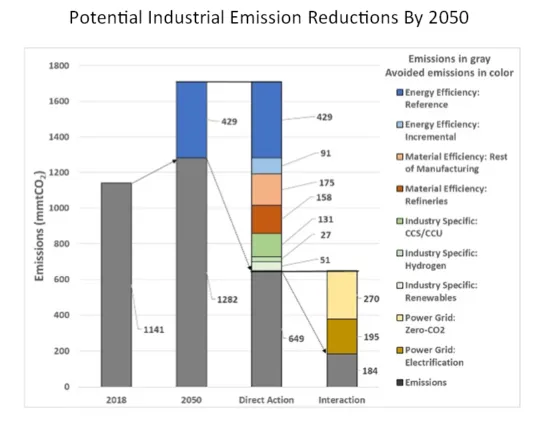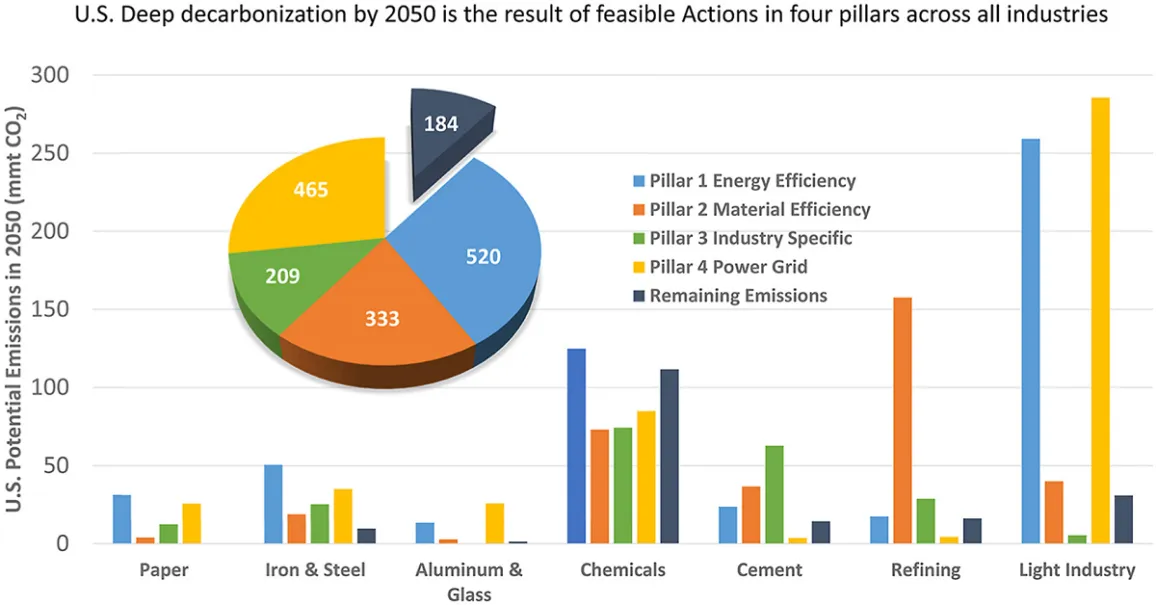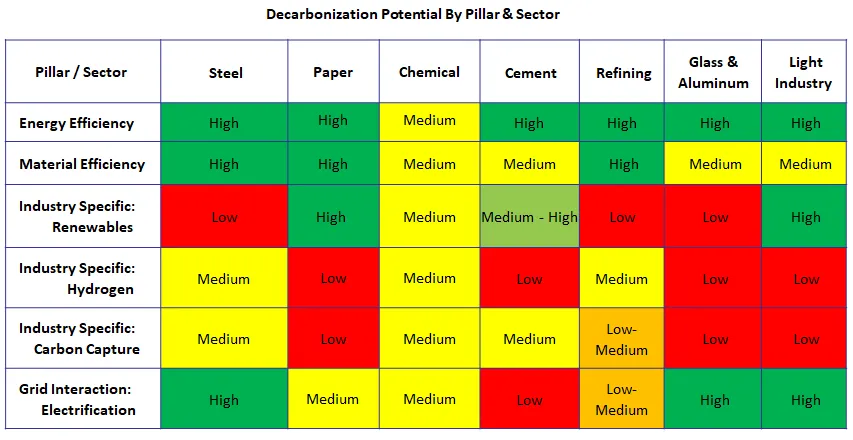Potential for Deep Decarbonization in U.S. Manufacturing
Deep reductions in industrial carbon dioxide (CO2) emissions are needed to achieve global and national emissions reduction targets, as well as individual corporate climate goals.
To better understand options for industrial decarbonization, the U.S. EPA’s ENERGY STAR Industrial program conducted a study to evaluate the potential for reducing energy-related CO2 emissions by 2050.
The analysis found that 86% of energy-related CO2 emissions could be reduced by using technologies and strategies available today.

Across all sectors evaluated, increased energy efficiency plays an important role. In less energy-intensive manufacturing sectors (light industry), greater energy efficiency can potentially reduce CO2 emissions by up to 34%.
While decarbonizing the industrial sector requires a variety of approaches, energy efficiency is a step all industry can take now and should be the foundation for any decarbonization plan.

The results of the study are published in the Journal of Cleaner of Production, Bottom-up estimates of deep decarbonization of U.S. manufacturing in 2050, by Ernst Worrell and Gale Boyd and can be downloaded at: https://www.sciencedirect.com/science/article/pii/S0959652621039342
More details on the study and its findings are provided below.

Study Design
The study evaluated the potential impact of four key decarbonization pillars on seven high-emitting sectors and an aggregate remaining industry or “light industry.” A bottom-up accounting exercise was conducted to estimate emission reductions in the eight sectors across each of the four decarbonization pillars based on existing literature and studies. To forecast emission reductions, the analysis used the Energy Information Administration’s Annual Energy Outlook (AEO 2019) to establish a baseline and reference case forecast of industrial activity, energy use and emissions. The estimates of the CO2 emission reductions from the bottom-up estimates are relative to the AEO 2019 Reference Case.
Study Findings
The analysis shows that an 86% reduction of energy-related CO2 emissions from the AEO Reference Case in 2050 is potentially achievable using strategies and technologies known today.

Energy efficiency plays a role across all industries, but its contribution to emissions reductions varies by sector. Across all industrial sectors, efficiency can contribute a 34% emissions reduction.
Decarbonizing the electricity grid and electrification of processes using fossil fuels will be an important strategy in many sectors. For emission reduction from electrification to realized, the electricity grid must also decarbonize and be able to support large industrial loads.

Because the industrial sector is not uniform, decarbonization strategies require solutions that are tailored to specific processes and sub-sectors. Therefore, there is no “one size fits all” solution for industrial decarbonization. Each sector and plant will need to determine the most effective strategy to decarbonize based on operating conditions, location, and other factors. The table below provides an overview of decarbonization opportunities for the sector analyzed in this study.

